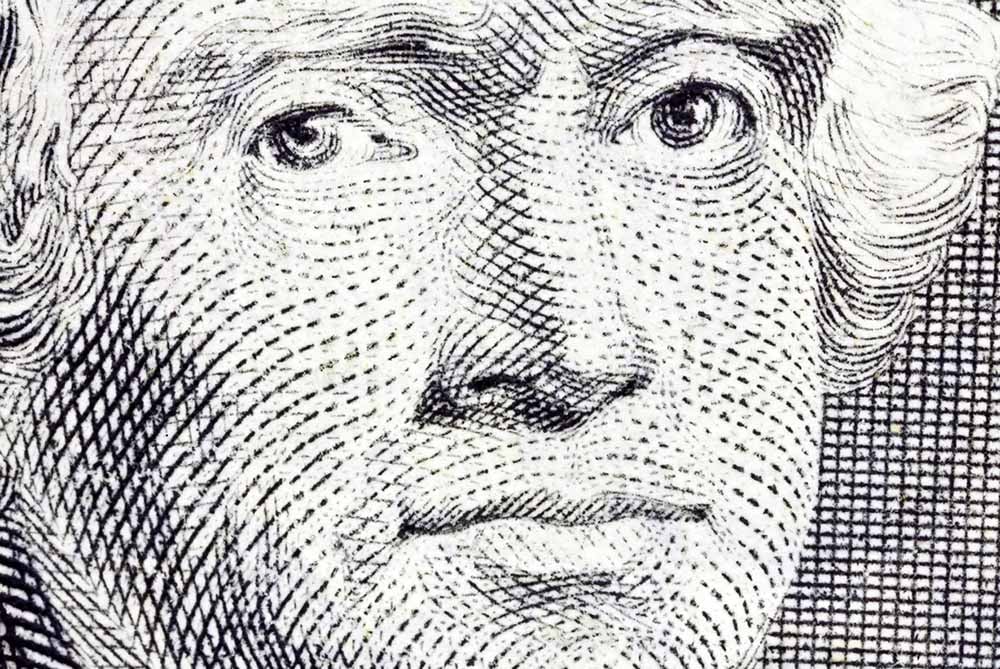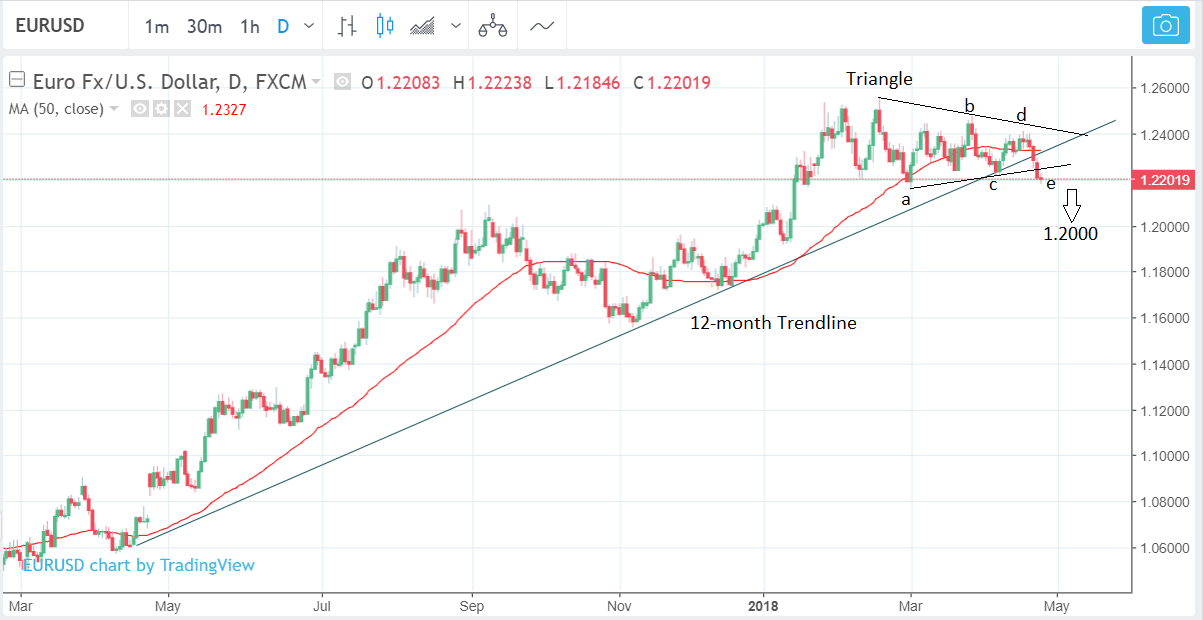The Euro-to-Dollar Rate Is Sliding Into Bearish Territory - 1.2000 Now Eyed
- EUR/USD is breaking down out of a pattern with the potential for substantial downside volatility
- 12-month trendline folowing the long-term trend also broken
- Chart of pair looks increasingly bearish; 1.2000 a possible target lower

© Adobe Stock
EUR/USD has crossed an important technical rubicon in the early hours of Tuesday morning, which now lends a decidedly bearish tint to the pair's chart.
The Euro-to-Dollar rate has finally broken down out of a triangle pattern on the daily chart (see below) suggesting the potential for further bearish volatility on the horizon.
The pair has also consolidated its breakdown beneath a major 12-month trendline, further suggesting weakness on the horizon, and indeed a possible change of the primary trend.
The pair broke below the lower boundary line of the triangle during early trading on Tuesday morning, after the US Dollar strengthened due to rising US Treasury yields - a common USD driver - which almost hit 3.0%, the highest level they have been at since before the financial crisis.
Yields reflect the compensation bond investors can expect to get due to erosion from rising inflation, yet inflation is also indicative of economic growth which attracts more inbound investment and is thus US Dollar positive. It appears the higher yields reflect expectations that the Federal Reserve is on course to raise interest rates to a higher end point - or terminal rate - than had previously been expected because the economy is growing faster than had been thought.
The US Dollar-Treasury yield story has led to an interesting technical development on EUR/USD which was in the process of completing a triangle pattern, as we noted in our week ahead forecast article.
The breakout to the downside of the triangle heavily recommends a continuation lower to a level close to 1.20, from a current spot price of 1.2206 at the time of writing.
A break below the 1.2200 level would confirm a drop to 1.2000 according to our previous analysis. Given today has already seen lows of 1.2185 it appears confirmation for this breakout has now been achieved and thus 1.2000 is now the next target on the radar.
Some analysts are still waiting for more downside to confirm a clear breakout. Commerzbank's analyst Karen Jones, for example, would prefer to see a deeper penetration first, below the 1.2155 February low, for confirmation of a bearish breakout.
"We suspect that in order to really generate some downside interest that we will need to see a close below the 1.2155 February low (favoured)," says Jones.
"We look for the cross to remain capped by the near term resistance line at 1.2418 and maintain a negative stance below here.
Intraday rallies are indicated to fail at circa 1.2240/75," she goes on to say.
Our own analysis suggests the pair is already well on its way lower and we expect it to go all the way down to 1.2000 based on the normal technical method for calculating targets from patterns, which is to take the height of the triangle, multiply it by the golden ratio of 0.618, and extrapolate that from the breakdown point.
Get up to 5% more foreign exchange by using a specialist provider to get closer to the real market rate and avoid the gaping spreads charged by your bank when providing currency. Learn more here.





